After-Hours Tour of the Fraunces Tavern Museum: "Path to Liberty"
Explore a new exhibit inside the oldest building in Manhattan, a witness to history throughout the Revolutionary War Era!

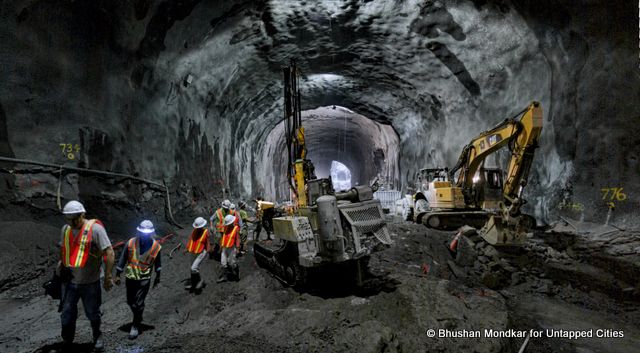
This is our third look inside the Second Avenue Subway construction project, which we’ve done yearly since 2011. The first visit was under 96th Street and the adjacent tunnels when Phase One wrapped up in 2011. The second was the 63rd Street upgrade for the Q line extension last year.
First envisioned in 1929, as part of the massive extension of the Independent subway System (IND), the Second Avenue Subway has been besieged by continuous economic woes. The ambitious project remained on drawings boards for more than four decades and after numerous revisions, went into actual construction in October 1972. Before the city was struck by its worst financial crisis in 1975, three sections of the tunnels were completed and the project came to a standstill yet again.
Three decades later in 2007, the City of New York and MTA made constructive plans to revive the project. The latest proposal envisions a two track line from 125th street in Harlem to Hanover Square in the Financial District. MTA proposes to build this 8.5 mile line in four segments and when completed, will carry two services- a full length second avenue ‘T line’ and a rerouted ‘Q line’ intercepted by 16 new stations.
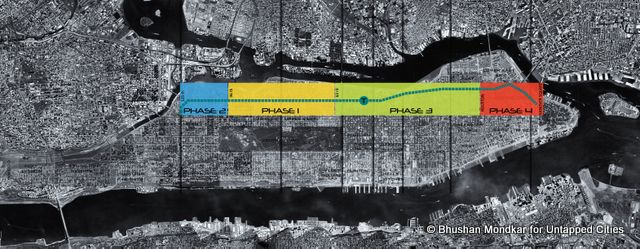
In April 2007, construction began on the $ 4.5 billion Phase One that stretches from 96th street to 63rd street, hundreds of feet under one of America’s densest neighborhoods. On this visit, we had the opportunity to go down inside the marvelous caverns of the 86th street station site and the adjoining tunnels.

Dr. Michael Horodniceanu, President of the MTA Capital Constrction (R) and Adam Lisberg, Chief spokesperson for the MTA leading the press tour.
Our team was led by Dr. Michael Horodniceanu-President of the MTA Capital Construction, Adam Lisberg- Chief spokesperson for the MTA and Thomas Peyton- Vice President of Parsons Brinckerhoff, the company managing the entire project. After an informative presentation about the project and its current status, we headed to the muck house on 86th street that handles the post blasting debris from the tunnels. A construction elevator with the inscription “Welcome to Thunderdome” was waiting to take us a hundred feet deep into the soul of Manhattan.
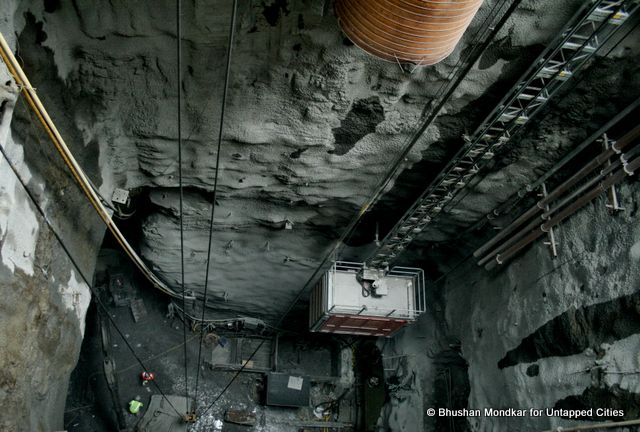
As we descended below a bustling Second Avenue, the elevator transported us into a whole new mysterious world of caverns, revealing a surreal history of millions of years of untouched schist. Bright Klieg lights dramatically lit up the rocky, muddy and cratered surfaces. The subterranean expanse was brimming with hulking machinery and sandhogs–some leveling a concrete bed for the future train tracks and others busy preparing explosive charges for blasting of outcrops. The shotcrete guns and water-diffusing canons added their own “special effects” to the scene. Minerals foliating from the schist gave a rustic tinge to the otherwise monochromatic earth-scape. In the distance, two tunnels blurred out into the darkness.
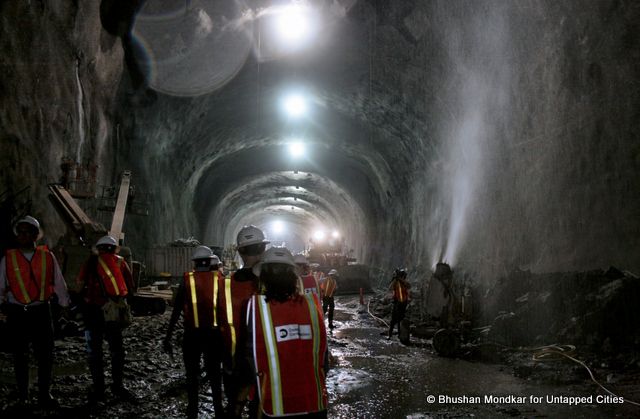
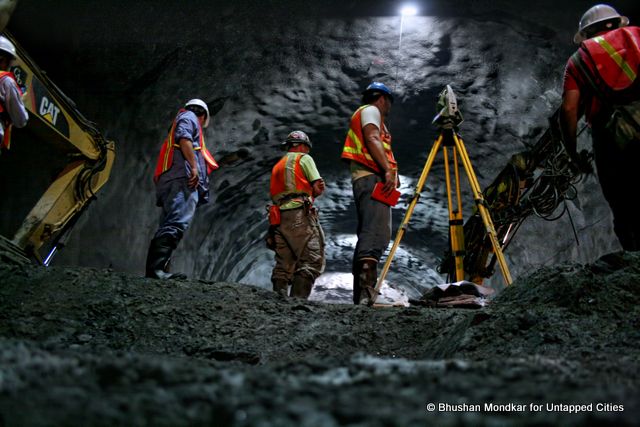

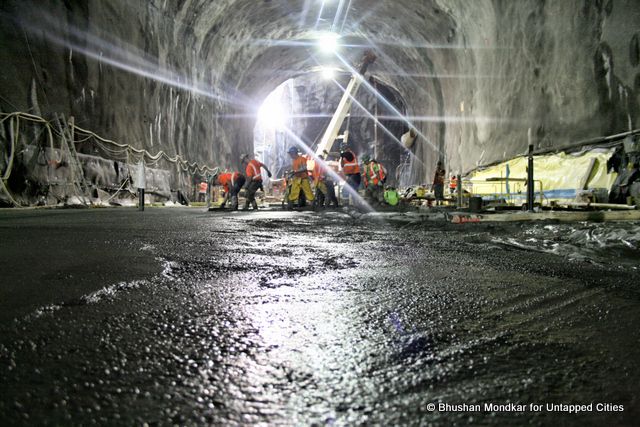
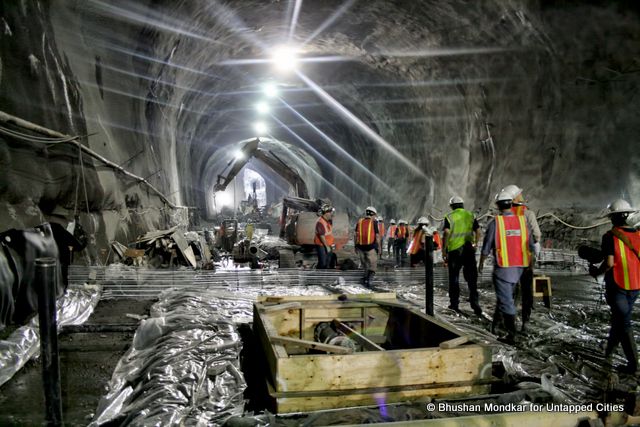
Although, the raw northbound tunnel looked more alluring, we were directed into the finished south bound tunnel. Dug by the massive Tunnel Boring Machine, these tunnels will carry an estimated 200,000 New Yorkers by December 2016, via the ‘Q’ and the soon-to-follow ‘T’ trains.




Once completed, the Second Avenue Subway will relieve pressure from the 4/5/6 trains (which averages around 1.3 million passengers daily). For now, the MTA plans to resume offering the locals-only tour of the site from September and open an information center later this month to address issues that residents and business owners face. It will also serve as an educational center providing information on the construction and history of the fabled Second Avenue Subway.
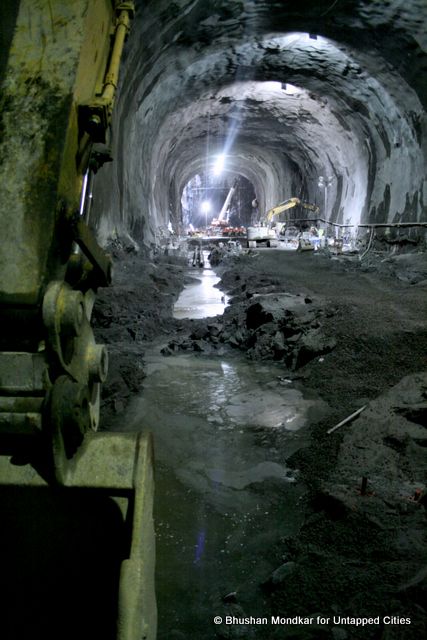
All photos taken by Bhushan Mondkar, with historical information from Second Ave Sagas. For news about Second Avenue subway construction, also follow The Launchbox.
Subscribe to our newsletter